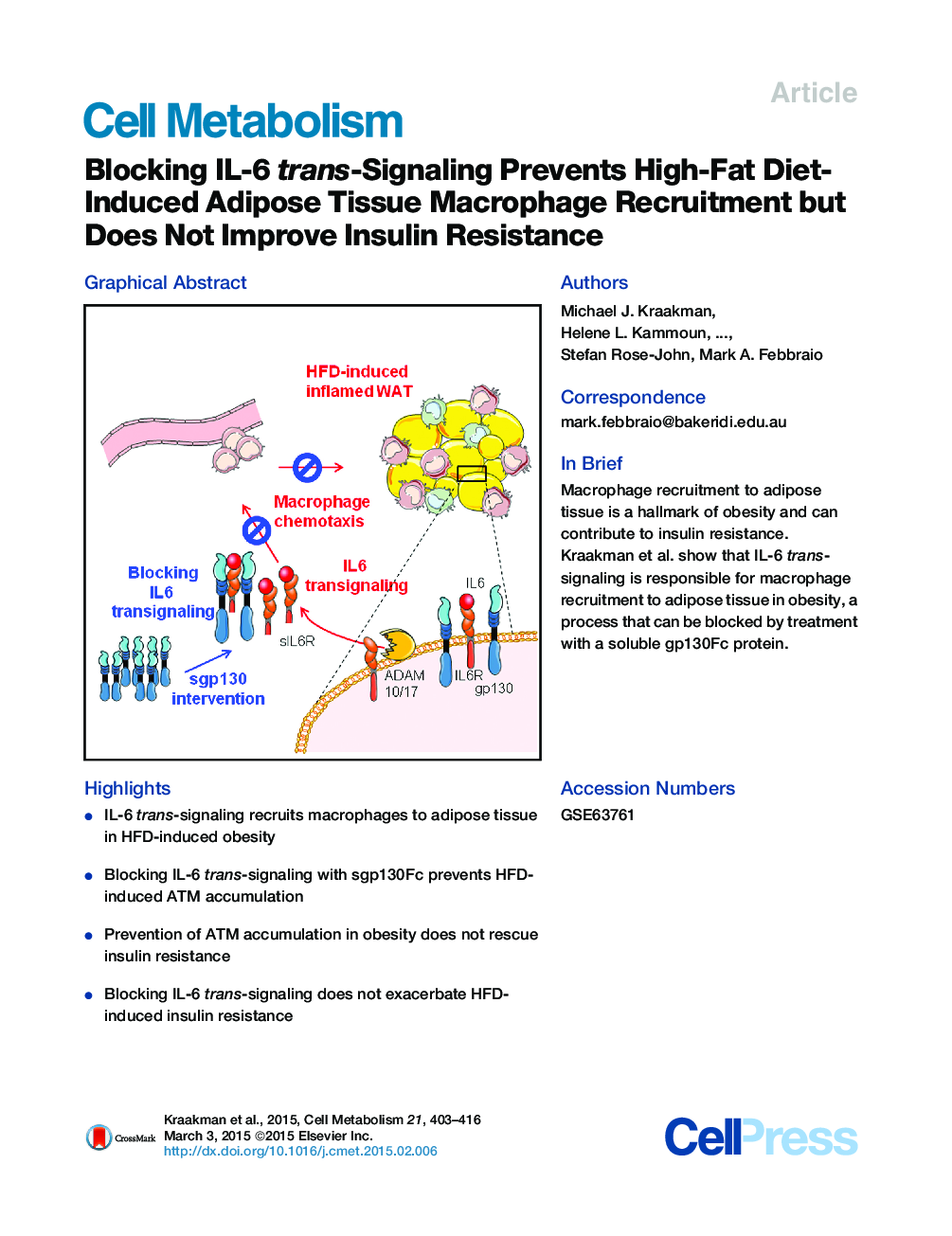| Article ID | Journal | Published Year | Pages | File Type |
|---|---|---|---|---|
| 2792387 | Cell Metabolism | 2015 | 14 Pages |
•IL-6 trans-signaling recruits macrophages to adipose tissue in HFD-induced obesity•Blocking IL-6 trans-signaling with sgp130Fc prevents HFD-induced ATM accumulation•Prevention of ATM accumulation in obesity does not rescue insulin resistance•Blocking IL-6 trans-signaling does not exacerbate HFD-induced insulin resistance
SummaryInterleukin-6 (IL-6) plays a paradoxical role in inflammation and metabolism. The pro-inflammatory effects of IL-6 are mediated via IL-6 “trans-signaling,” a process where the soluble form of the IL-6 receptor (sIL-6R) binds IL-6 and activates signaling in inflammatory cells that express the gp130 but not the IL-6 receptor. Here we show that trans-signaling recruits macrophages into adipose tissue (ATM). Moreover, blocking trans-signaling with soluble gp130Fc protein prevents high-fat diet (HFD)-induced ATM accumulation, but does not improve insulin action. Importantly, however, blockade of IL-6 trans-signaling, unlike complete ablation of IL-6 signaling, does not exacerbate obesity-induced weight gain, liver steatosis, or insulin resistance. Our data identify the sIL-6R as a critical chemotactic signal for ATM recruitment and suggest that selectively blocking IL-6 trans-signaling may be a more favorable treatment option for inflammatory diseases, compared with current treatments that completely block the action of IL-6 and negatively impact upon metabolic homeostasis.
Graphical AbstractFigure optionsDownload full-size imageDownload high-quality image (225 K)Download as PowerPoint slide
